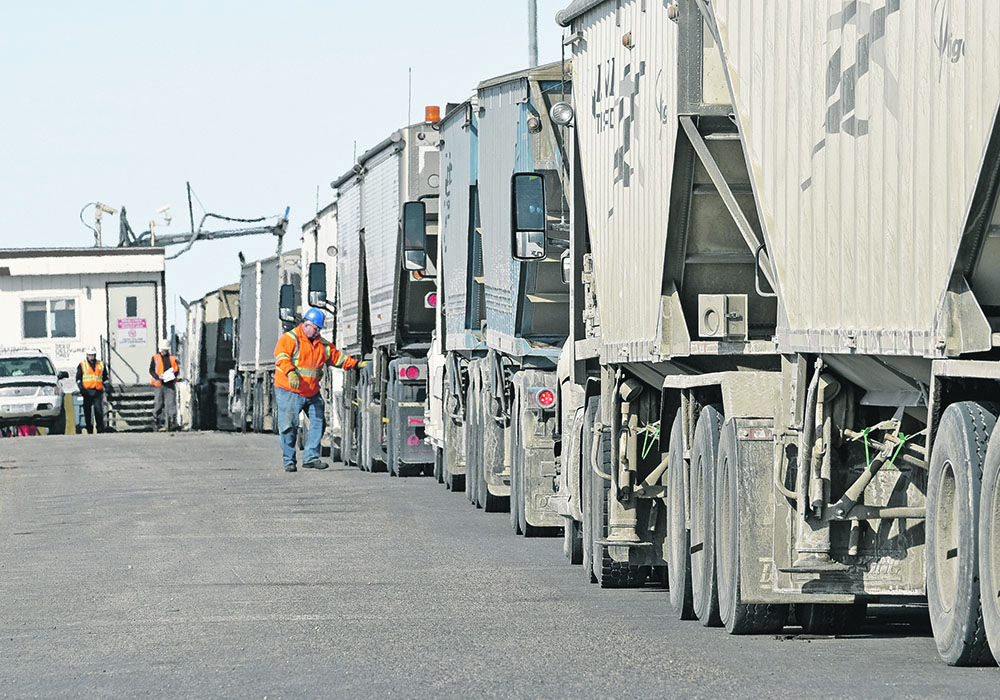Surge seen in eastbound shipments through the Port of Thunder Bay as demand from Europe and North Africa increases
The COVID-19 pandemic has unleashed a swath of economic devastation across many parts of Canada’s agricultural landscape.
But one segment of the Canadian ag industry has been running full bore since the pandemic took hold a couple months ago.
Western Canadian grain handlers have seen record or near-record grain movement throughout most of March and April, says Wade Sobkowich, executive director of the Western Grain Elevators Association.
The WGEA, which represents major grain-handling companies across the West, says prairie grain elevators have been moving huge volumes of grain since the COVID-19 threat took root on the Prairies.
Read Also

VIDEO: Agritechnica Day 4: Robots and more robots, Nexat loves Canada and the trouble with tariffs
Agritechnica Day 4: Robots and more robots, Nexat loves Canada and the trouble with tariffs.
Rail capacity available to major Canadian grain handling companies has increased such as Richardson International, Parrish & Heimbecker, Paterson Grain, Viterra and G3 has increased significantly as rail freight demand from shippers in other sectors has slowed.
“Grain movement has been very strong and it’s been that way since the end of the (February) rail blockades,” said Sobkowich.
“With shipping down in other sectors of the economy, that available rail capacity has been available to grain. And we’ve been using it all,” he added.
“We’ve been moving more grain than we have in a long time, and in some cases — depending on the railway and the terminal facility — we’ve been moving more than ever.
“Some records will have been set here in March and April, in terms of grain volumes.”
On May 5, Canadian National Railway said in a news release that it moved a record 2.81 million tonnes of grain in April, including a record 2.73 million tonnes in Western Canada.
“CN has never slowed down since the beginning of the COVID-19 pandemic,” said J.J. Ruest, company president and chief executive officer.
A day earlier, rival company Canadian Pacific Railway issued a similar news release, announcing its best ever monthly grain haul.
CP moved a record 2.8 million tonnes in April, surpassing the company’s previous monthly record, set in November 2019, by 100,000 tonnes.
“CP’s family of professional railroaders continues to deliver for our customers and the economy during this extremely challenging COVID-19 period,” said Joan Hardy, CP’s vice-president of sales and marketing for grain and fertilizers.
CP’s record-setting April included strong movement of westbound grain, as well as a surge in eastbound shipments through the Port of Thunder Bay.
Statistics from the Thunder Bay Port Authority show grain handlings at more than a million tonnes in April, up from 790,000 tonnes during the same month last year. That represents a year-over-year increase of more than 27 percent.
In a May 5 news release, the port authority said prairie grain farmers and western exporters are fulfilling increased demand for Canadian grain in Europe and North Africa.
The global pandemic has created voids in grain supply as some countries restrict exports and consumers stock up on staple foods, the port added.
“The capability of (Canada’s) supply chain and the commitment of the partners all along the supply chain are really shining through during this unprecedented time,” said Tim Heney, chief executive officer at the Port of Thunder Bay.
“The railways, stevedores, grain elevators, inspectors, and mariners, to name a few, are handling increased trade despite the challenges posed by the pandemic. They are keeping commodities flowing to parts of the world that could otherwise see a food shortage.”
Earlier this year, Canada’s reputation as a reliable supplier of grain was anything but stellar.
Early-year grain movement was affected by a variety of factors including a rail strike at CN and railway blockades initiated by opponents of the Coastal GasLink Pipeline project through Wet’suwet’en First Nation territory in British Columbia.
“We were playing catch up,” Sobkowich said when asked about grain movement before the pandemic.
Pent-up demand for rail capacity was one factor that led to strong grain movement in March and April, he added.
“In addition, due to the COVID-19 crisis, as we all know, the larger economy is doing very poorly…. Shipping is down in the oil sector. Shipping is down for forest products and container movements are down so that extra available rail capacity (for grain) was unexpected.”
The grain industry has also been fortunate in that it has seen few disruptions in its labour force.
“Our workforce is healthy and able to go to work and willing to go to work.”
Sobkowich agreed that unusually strong shipments of prairie grain through Thunder Bay point to increased demand in eastern markets.
The numbers also reflect adjustments that were made by Canadian grain companies in February, when shipments through western ports were impacted by blockades.
In addition, fundamental changes in the global marketplace over the past couple years have forced Canadian exporters to rethink sales programs, reassess risk and make adjustments.
More Canadian grain companies are trying to diversify sales, identify long-term stable markets and differentiate between reliable buyers and opportunistic buyers.
















